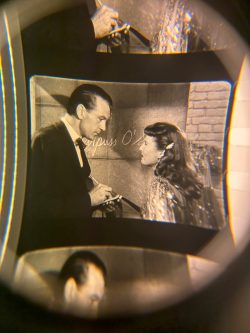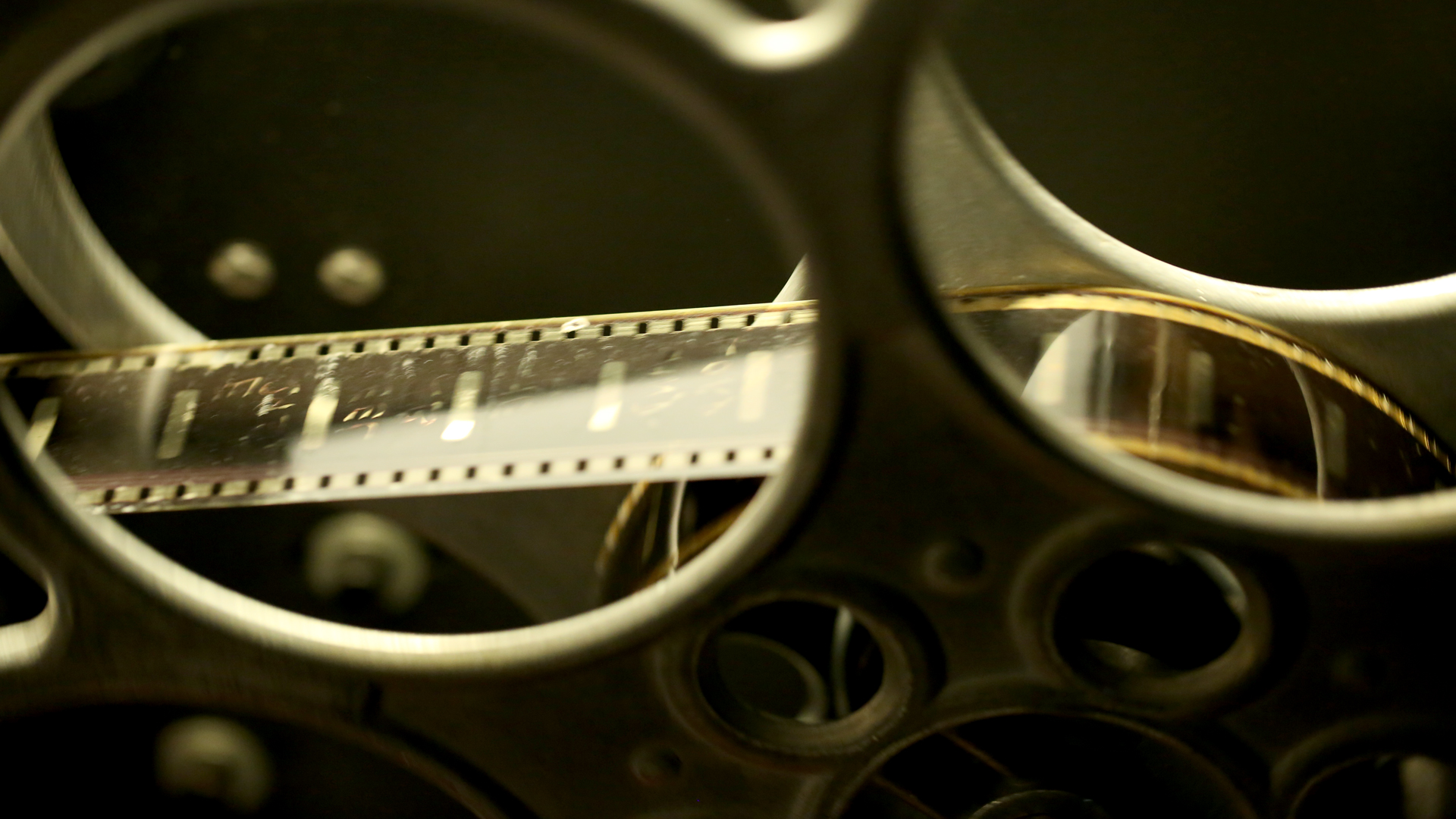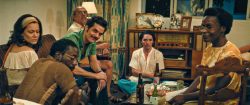Posted December 29, 2022
The Magic of 35mm Movies
by JBFC Marketing Associate Hannah Douglas
Have you ever noticed the line “presented on 35mm” listed in the film description for some of our movies?
As a millennial, I’ve become a bit too comfortable living in the days of digital Everything, Everywhere All at Once (shout out to a fantastic film I saw at the Burns!). So, when a 35mm movie screening is available, it’s a great opportunity to cut through the noise and experience a film the old-fashioned way.
Not many theaters provide artful analog presentations of these cherished film reels, but the Jacob Burns Film Center is one of them. I recently caught up with the JBFC’s Tim Mannion, Head Projectionist and Jesse LoCascio, Projectionist and AV Coordinator. Here’s what they had to say about the process of presenting 35mm movies—from the time the booth team receives the print, usually around a week before screening, to when the end credits roll.
Celluloid vs. Digital
So what exactly is 35mm, and what’s happening behind the scenes in the booth? Check out this video for a great visual overview:
“In order to properly run a 35mm print at the JBFC, several intricate processes have to take place to make it happen successfully,” says LoCascio.
Upon receiving each individual reel, the projectionist will carefully inspect them. For a feature film, that might include anywhere from four to seven reels.
“Using a motorized Kelmar film workbench and winding the film foot-by-foot onto a take-up reel, the projectionist will take down detailed notes of the overall condition of the film print, as well as any and all technical foibles or issues (dust, scratches, sprocket damage, general wear and tear) that could hinder exhibition,” explains LoCascio.

The film will live in a special drawer until it’s time to be “teched” (or projected) to test how it will look before screening day.
“It is a process that requires tremendous precision and patience, as calibration often involves taking measurements of light levels, oil levels, cleaning the gate, lining up the proper aspect ratio plates, changing to the proper lens, etc,” says LoCascio. “Maintenance on a 35mm projector is much like maintenance on an old car—it can be done, but it requires a deft hand, very special skills, and an encyclopedic knowledge of much older technologies.”
On the day of the screening, after cleaning and calibration, the projectionist will thread the film through the machine’s interior, but they must take care not to mis-thread and ruin the film.
Once the movie begins, the projectionist’s process isn’t done! They will look for changeover cues that appear at the end of the first reel.
“The projectionist can seamlessly switch over to the beginning of the next reel without interrupting the show,” explains LoCascio. “It’s all a very romantic technical process that, if done correctly, will allow the audience to never even know you’re there.”
I might be a millennial, but I wanted to know if it’s accurate to compare watching a 35mm film to listening to a song on vinyl.
“You can literally see the history of the print in every frame,” says Mannion. “Every minor imperfection the print has acquired over the years will be present, much like the pops in an old vinyl record. It’s more like viewing a piece of history.
It’s interesting and inspiring to me that some filmmakers still choose to shoot on 35mm, and I wanted to hear from the experts—Mannion and LoCascio—on why they think this is.
“[Filming on 35mm] gives it a more accurate representation of the actual scene,” explains Mannion. “When filming on 35mm, each frame consists of a single image taken when the footage is shot. However, when it is filmed digitally, each frame on screen consists of thousands of tiny pixels that are put together to create the image. This gives footage shot on film a more subtle and accurate depiction of the images.”
LoCascio added that “ The image from shooting on 35mm or even 16mm immediately offers up an inherent beauty and softness that we unconsciously just associate with cinema. Film handles and retains colors better than any other format, is easier on the eyes than any format, and is best for preservation.”

Showing a 35mm film is certainly an incredible art form—one that I hope never goes away in this digital age.
“As long as repertory theaters and art houses are equipped to exhibit films on celluloid, there will always be a desire to do so,” says LoCascio. “The audience will always show up for a vintage 35mm print of something classic.”
The next time you’re buying movie tickets, I hope you’ll keep an eye out for those wonderful words “presented on 35mm.” If you’d like to learn more, check out this article in the New York Times.
We at the JBFC are proud exhibitors of 35mm film and often bring in new restorations of our repertory titles along with some new releases.



